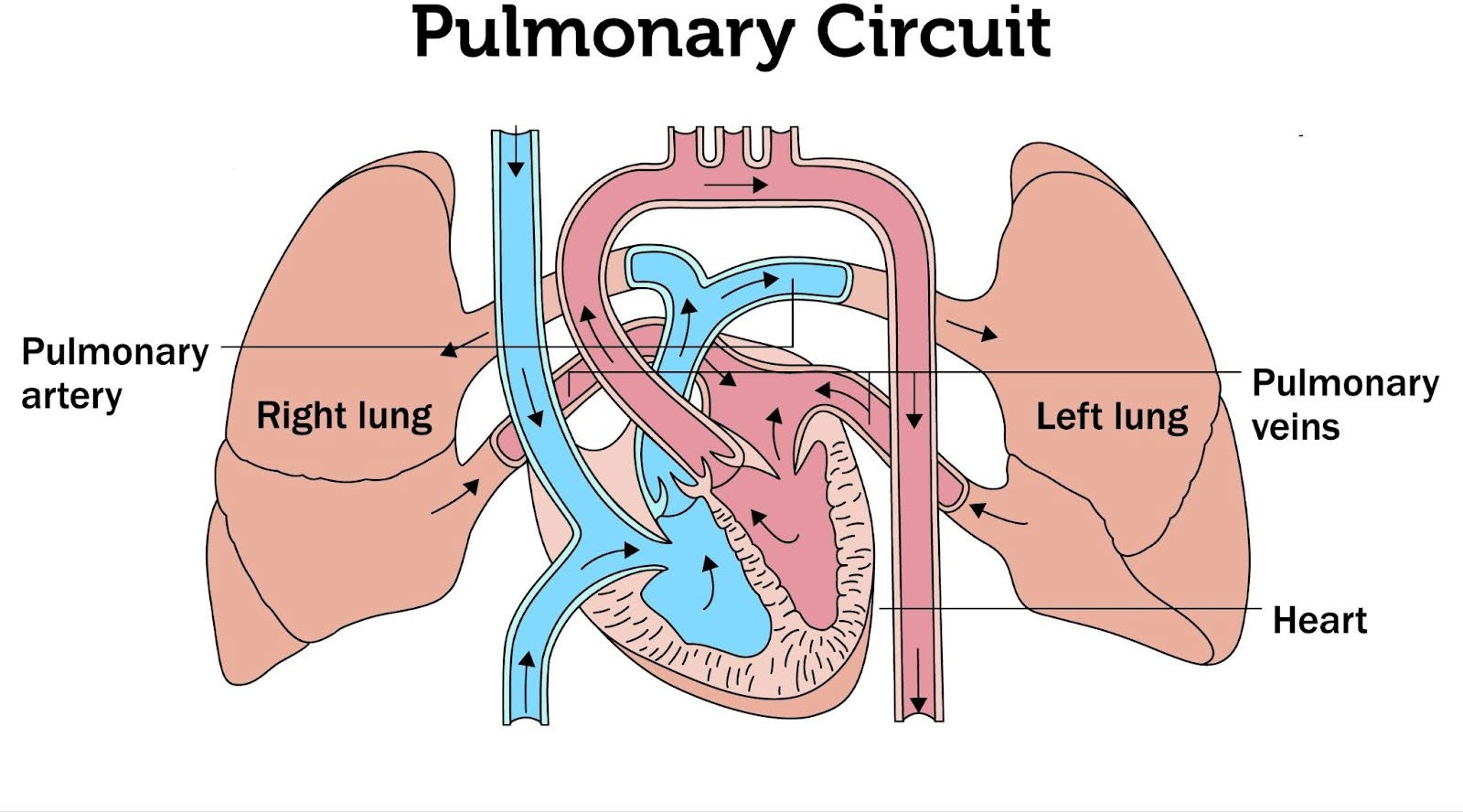Through which structure does blood flow from the heart to the lungs in the pulmonary circulation?
Left ventricle
Pulmonary artery
Left atrium
Pulmonary veins
The Correct Answer is B
Choice A reason: The left ventricle pumps oxygenated blood into the aorta and then to the rest of the body, not
directly to the lungs.
Choice B reason: The pulmonary artery is the correct answer because it carries deoxygenated blood from the right
ventricle of the heart to the lungs for oxygenation.
Choice C reason: The left atrium receives oxygenated blood from the lungs through the pulmonary veins, so it is not
involved in sending blood to the lungs.
Choice D reason: The pulmonary veins carry oxygenated blood from the lungs to the left atrium, not from the heart
to the lungs.
 |
Nursing Test Bank
Naxlex Comprehensive Predictor Exams
Related Questions
Correct Answer is C
Explanation
Choice A reason: Memory loss is not typically associated with vitamin C deficiency. Memory loss can be related to various conditions, including neurological disorders or vitamin B12 deficiency.
Choice B reason: Brittle hair can be a sign of vitamin C deficiency due to its role in collagen production, which affects the health of hair. However, it is not as specific or common as bleeding gums.
Choice C reason: Bleeding gums are a common symptom of vitamin C deficiency. Vitamin C is essential for the maintenance of healthy connective tissue, which includes the gums. A deficiency can lead to scurvy, which manifests as bleeding gums among other symptoms.
Choice D reason: Constipation is not directly associated with vitamin C deficiency. While a healthy diet rich in vitamin C can aid digestion, constipation can be caused by a variety of factors unrelated to vitamin C intake.

Correct Answer is A
Explanation
Choice A reason: An upper GI endoscopy is typically performed to evaluate symptoms of persistent heartburn, as it allows direct visualization of the esophagus, stomach, and duodenum, which are commonly affected by conditions that cause heartburn.
Choice B reason: Flexible sigmoidoscopy is used to examine the lower part of the colon, which is not typically
associated with symptoms of heartburn.
Choice C reason: A colonoscopy is used to view the entire colon and is not the first choice for investigating heartburn,
as this symptom is not directly related to the colon.
Choice D reason: A lower GI series, or barium enema, is an X-ray examination of the large intestine, which includes the colon and rectum. It is not typically used to diagnose conditions that cause heartburn.
Whether you are a student looking to ace your exams or a practicing nurse seeking to enhance your expertise , our nursing education contents will empower you with the confidence and competence to make a difference in the lives of patients and become a respected leader in the healthcare field.
Visit Naxlex, invest in your future and unlock endless possibilities with our unparalleled nursing education contents today
Report Wrong Answer on the Current Question
Do you disagree with the answer? If yes, what is your expected answer? Explain.
Kindly be descriptive with the issue you are facing.
